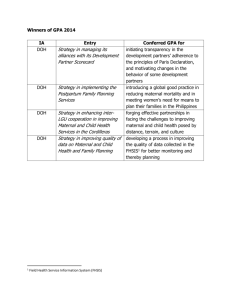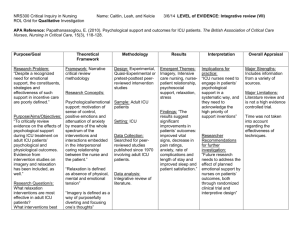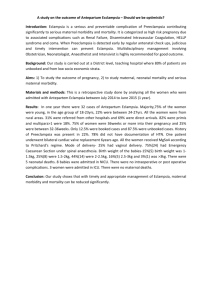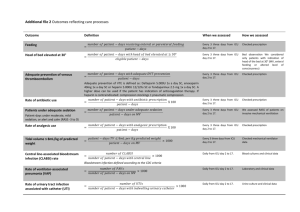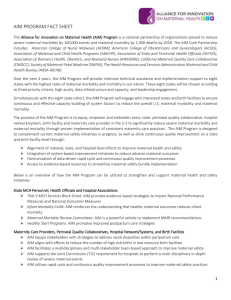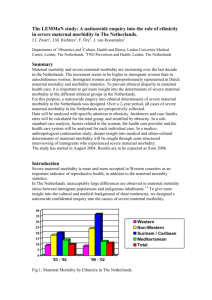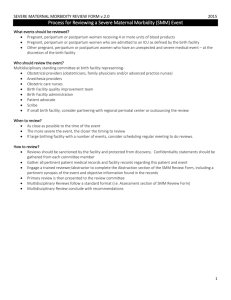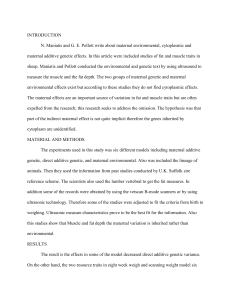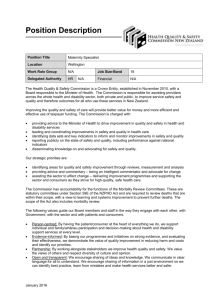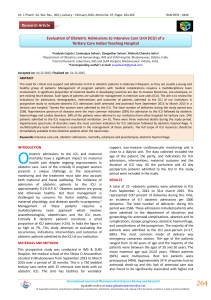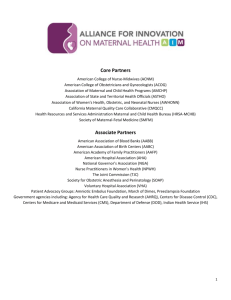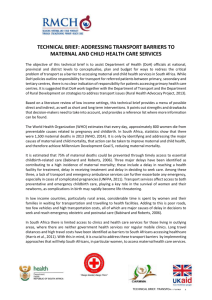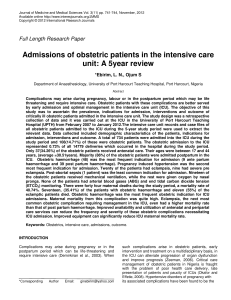Severe maternal morbidity and critical care
advertisement
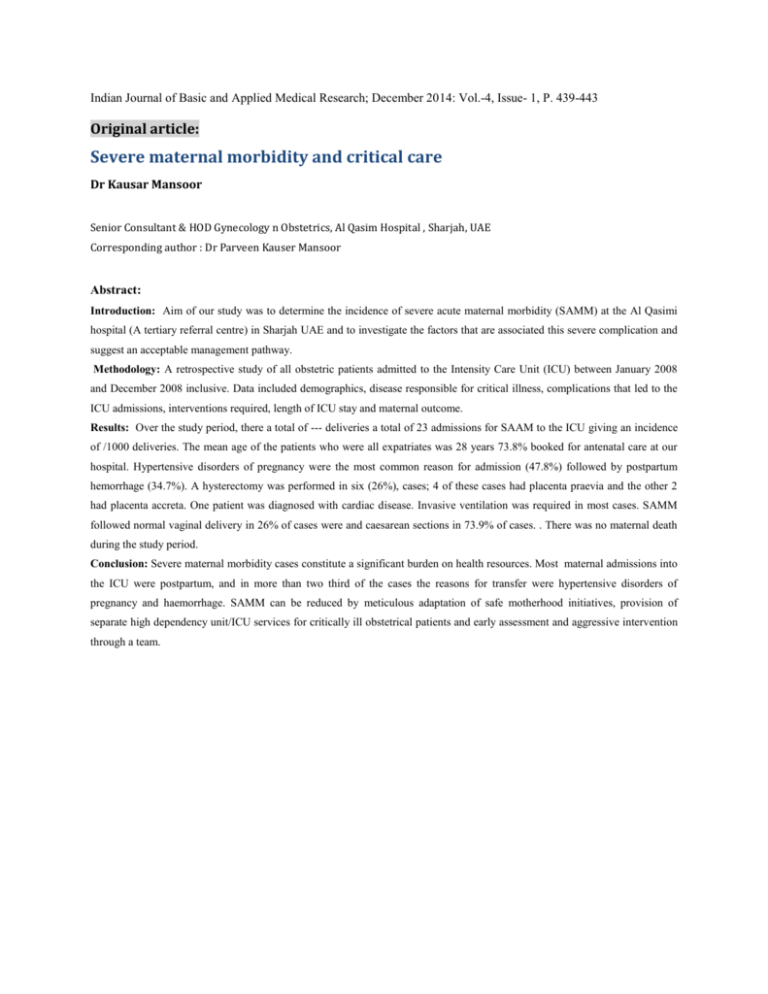
Indian Journal of Basic and Applied Medical Research; December 2014: Vol.-4, Issue- 1, P. 439-443 Original article: Severe maternal morbidity and critical care Dr Kausar Mansoor Senior Consultant & HOD Gynecology n Obstetrics, Al Qasim Hospital , Sharjah, UAE Corresponding author : Dr Parveen Kauser Mansoor Abstract: Introduction: Aim of our study was to determine the incidence of severe acute maternal morbidity (SAMM) at the Al Qasimi hospital (A tertiary referral centre) in Sharjah UAE and to investigate the factors that are associated this severe complication and suggest an acceptable management pathway. Methodology: A retrospective study of all obstetric patients admitted to the Intensity Care Unit (ICU) between January 2008 and December 2008 inclusive. Data included demographics, disease responsible for critical illness, complications that led to the ICU admissions, interventions required, length of ICU stay and maternal outcome. Results: Over the study period, there a total of --- deliveries a total of 23 admissions for SAAM to the ICU giving an incidence of /1000 deliveries. The mean age of the patients who were all expatriates was 28 years 73.8% booked for antenatal care at our hospital. Hypertensive disorders of pregnancy were the most common reason for admission (47.8%) followed by postpartum hemorrhage (34.7%). A hysterectomy was performed in six (26%), cases; 4 of these cases had placenta praevia and the other 2 had placenta accreta. One patient was diagnosed with cardiac disease. Invasive ventilation was required in most cases. SAMM followed normal vaginal delivery in 26% of cases were and caesarean sections in 73.9% of cases. . There was no maternal death during the study period. Conclusion: Severe maternal morbidity cases constitute a significant burden on health resources. Most maternal admissions into the ICU were postpartum, and in more than two third of the cases the reasons for transfer were hypertensive disorders of pregnancy and haemorrhage. SAMM can be reduced by meticulous adaptation of safe motherhood initiatives, provision of separate high dependency unit/ICU services for critically ill obstetrical patients and early assessment and aggressive intervention through a team.






